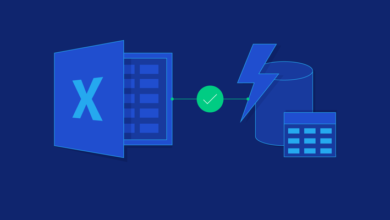Understanding Ransomware as a Service (RaaS) and Effective Protection Tips

In recent years, ransomware has emerged as a severe threat to individuals, businesses, and even governments worldwide. Ransomware attacks involve encrypting crucial files and demanding a ransom for their release. To further exacerbate this issue, the rise of Ransomware as a Service (RaaS) has made it easier for cybercriminals to execute attacks. This blog aims to shed light on ransomware, delve into the menacing world of RaaS, and provide essential tips for effectively protecting yourself and your organization from this growing cyber threat.
Understanding Ransomware
Ransomware is software designed to encrypt files and systems, effectively locking users out of their own data. The perpetrators then demand a ransom, usually in cryptocurrency, for the decryption key to regain access. This form of cyber-attack has become increasingly prevalent due to its potential for substantial financial gains and its ease of execution.
Once a system is infected with ransomware, the malware encrypts files using a strong encryption algorithm. Victims are then presented with a ransom note explaining the situation and providing instructions on how to pay the ransom. The ransom amounts can vary widely and are often designed to be affordable enough to incentivize victims to pay.
Ransomware attacks can occur through various vectors, including malicious email attachments, infected websites, or exploiting vulnerabilities in outdated software. The damage caused by a successful ransomware attack is extensive and can lead to significant data loss, financial damage, and operational disruptions for individuals and organizations.
To mitigate the risk of falling victim to ransomware, individuals and organizations must employ a combination of cybersecurity best practices, including regular backups, up-to-date security software, and employee training to recognize and avoid potential threats. Understanding the mechanics of ransomware is vital in developing effective prevention, detection, and response strategies to combat this pervasive cyber threat.
Ransomware as a Service (RaaS)
Ransomware as a Service (RaaS) is a disturbing evolution in the realm of cybercrime. It operates on a similar principle to Software as a Service (SaaS) models but for criminal purposes. RaaS allows even those with limited technical expertise to launch ransomware attacks, making it a perilous threat to individuals and organizations.
In the RaaS model, developers or cybercriminals create sophisticated ransomware strains and offer them on the dark web or private forums. These creators act as service providers, offering affiliates or aspiring cybercriminals access to their ransomware infrastructure for a fee or a percentage of the ransom collected.
Affiliates, often individuals with malicious intent but lacking advanced technical skills, can then use these ransomware strains to carry out attacks. The developers provide them with a user-friendly dashboard, support, and sometimes even updates to the ransomware, ensuring its effectiveness and maximizing its reach.
The revenue generated from successful attacks is usually divided between the developers and the affiliates, with the developers taking a significant cut, often between 20% to 40% of the ransom. This profit-sharing model motivates more cybercriminals to participate, leading to an increase in the frequency and complexity of ransomware attacks.
The ease of access to RaaS has democratized cybercrime, allowing a broader spectrum of individuals to engage in illicit activities. This has, in turn, led to a significant rise in the number of ransomware attacks globally, impacting businesses, governments, healthcare organizations, and individuals alike.
To counter the threat of RaaS, it is imperative to implement comprehensive cybersecurity measures. This includes regular software updates, employee training, robust network security, and secure backups to minimize the impact of a potential attack. Understanding the intricacies of RaaS is essential in developing effective counterstrategies to combat this evolving and highly damaging cyber threat.
Ransomware Protection Tips
Ransomware attacks can be devastating, but with the right precautions and practices, you can significantly reduce the risk of falling victim to these malicious cyber activities. Here are some crucial ransomware protection tips to safeguard your data and systems:
Regular Backups and Data Encryption:
Regularly back up your data, ensuring it’s stored in a separate, secure location not directly connected to your network. Automated backups can provide a convenient and consistent solution.
Encrypt your sensitive data to ensure that even if it’s accessed, it remains unreadable and unusable without the proper decryption key.
Update Software and Systems:
Keep your operating systems, applications, and antivirus software up to date with the latest security patches. Cybercriminals often exploit vulnerabilities in outdated software.
Enable automatic updates to ensure your systems are protected against newly discovered vulnerabilities.
Educate and Train Employees:
Conduct regular training sessions to educate employees about phishing emails, suspicious attachments, and links. Encourage them to exercise caution and report any unusual activity promptly.
Simulate phishing attacks to train employees in recognizing and responding to phishing attempts effectively.
Use Strong Authentication and Access Controls:
Implement multi-factor authentication (MFA) wherever possible to add an extra layer of security.
Limit user privileges to the least level necessary for their job roles. Unauthorized access can lead to more extensive damage during a ransomware attack.
Deploy Network and Endpoint Protection:
Use firewalls and antivirus software to protect against malware and unauthorized access.
Utilize intrusion detection systems to monitor network traffic and identify potential threats promptly.
Incident Response Plan:
Develop a robust incident response plan that outlines the steps to take in case of a ransomware attack, including isolating affected systems and reporting the incident to appropriate personnel.
Regularly test and update the incident response plan to ensure its effectiveness and relevance.
Regular Security Audits and Penetration Testing:
Conduct routine security audits and vulnerability assessments to identify potential weaknesses in your network and systems.
Perform penetration testing to simulate cyber-attacks and discover vulnerabilities that need to be addressed.
Implement Ransomware-Specific Tools and Solutions:
Consider using dedicated anti-ransomware tools that can detect and prevent ransomware attacks by monitoring and analyzing system behavior.
Invest in advanced threat detection and response solutions that can identify and mitigate potential ransomware threats in real time.
Stay Informed and Remain Vigilant:
Stay informed about the latest ransomware trends, attack techniques, and prevention strategies.
Stay vigilant and suspicious of unexpected emails, attachments, or links, even if they appear to be from trusted sources.
By implementing these ransomware protection tips and maintaining a proactive and informed approach to cybersecurity, you can significantly reduce the risk of falling victim to ransomware and ensure the safety and security of your digital assets.




